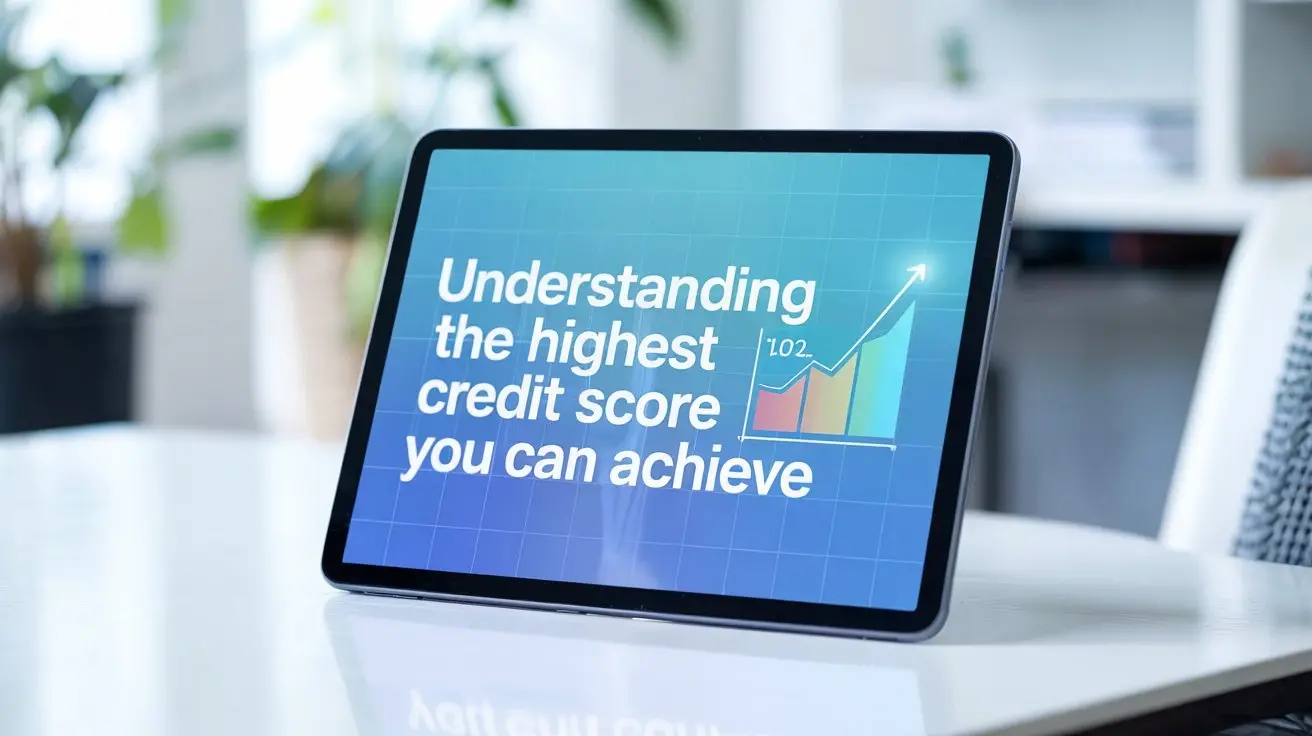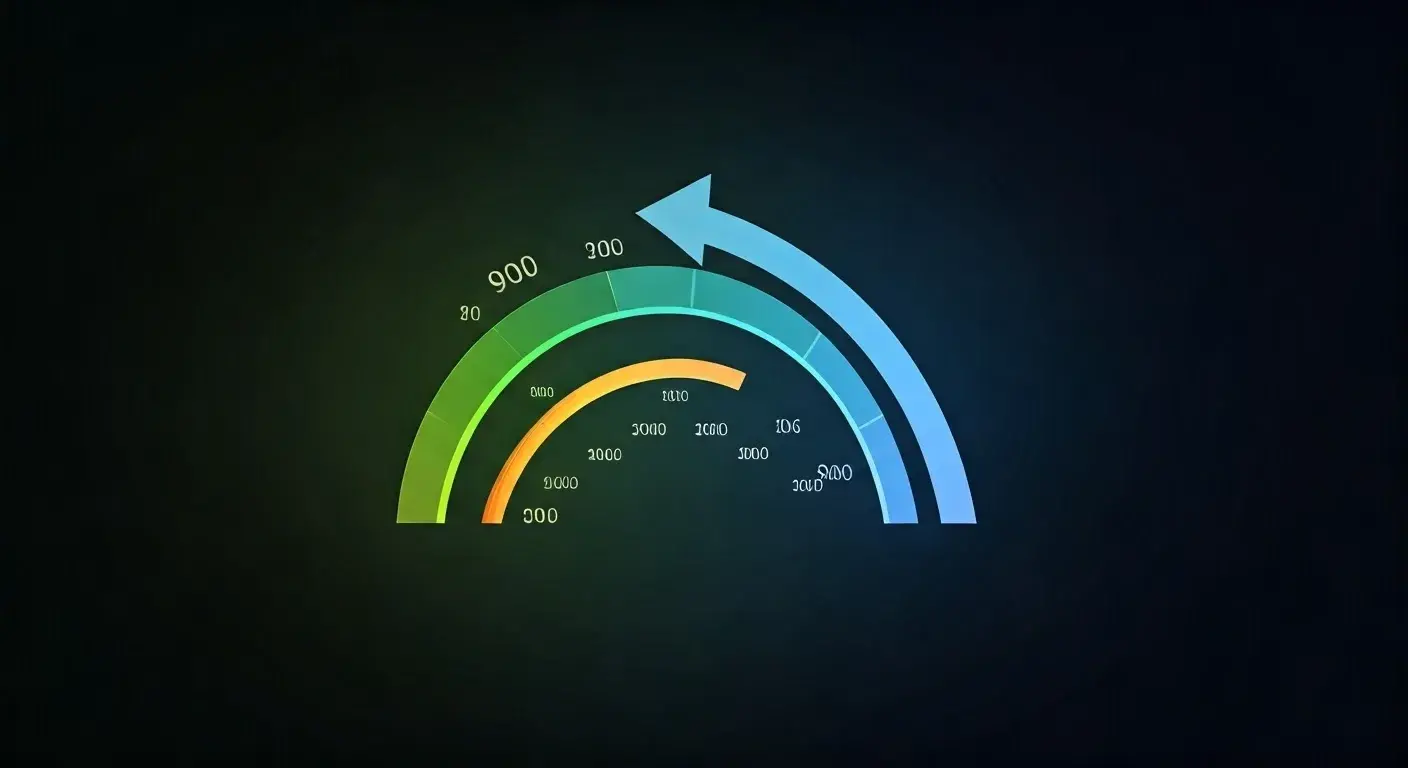-
Posted on: 27 May 2023

-
Unlock unprecedented productivity and achieve your goals with the revolutionary 20/10 Rule. This powerful strategy offers a simple yet profound method to enhance focus, manage time effectively, and discover the magic behind sustained success in today's demanding world.
What is the 20/10 Rule?
At its core, the 20/10 Rule is a time management technique designed to maximize focus and prevent burnout by structuring work into focused bursts followed by short, restorative breaks. It dictates that for every 20 minutes of concentrated work, you should take a 10-minute break. This simple yet profound ratio creates a sustainable rhythm that enhances cognitive function, boosts productivity, and fosters a sense of accomplishment without overwhelming the individual. It's a practical framework for anyone looking to improve their efficiency and well-being in an increasingly demanding professional and personal landscape. Unlike rigid time-blocking methods, the 20/10 Rule offers flexibility within its structured approach, making it adaptable to various tasks and workflows.
Origins and Evolution of the 20/10 Rule
While the exact genesis of the 20/10 Rule is somewhat nebulous, its principles are deeply rooted in established productivity and cognitive science research. The concept of alternating work and rest periods to maintain focus and prevent mental fatigue has been explored for decades. Early time management strategies, such as the Pomodoro Technique, which utilizes 25-minute work intervals followed by 5-minute breaks, share a common ancestry with the 20/10 Rule. The Pomodoro Technique, developed by Francesco Cirillo in the late 1980s, popularized the idea of using a timer to break down tasks into manageable intervals. The 20/10 Rule can be seen as a natural evolution or variation, offering a slightly different ratio that some individuals find more conducive to their workflow and attention span. The shift from 25/5 to 20/10 might stem from observations that shorter, more frequent breaks can be more effective for certain types of tasks or for individuals who experience mental fatigue more rapidly. The beauty of such techniques lies in their adaptability; as our understanding of cognitive load and attention spans evolves, so too do these practical tools.
The digital age has further amplified the need for such structured approaches. With constant notifications, the allure of multitasking, and the ever-present stream of information, maintaining deep focus has become a significant challenge. The 20/10 Rule emerged as a countermeasure, offering a tangible strategy to reclaim attention and engage in deliberate, productive work. Its popularity has surged in recent years, driven by online productivity communities, self-help blogs, and the general quest for better work-life balance. Many professionals, students, and creatives have found the 20/10 framework to be a more accessible and less daunting alternative to longer work sprints, particularly when tackling complex or mentally taxing projects. The evolution is not just in the name or the specific intervals, but in the growing recognition of its psychological underpinnings and its practical application in diverse settings.
Comparison with Other Productivity Techniques
To truly appreciate the 20/10 Rule, it's helpful to compare it with other popular time management methodologies. While all aim to boost productivity, they differ in their structure, duration, and underlying philosophy.
Technique Work Interval Break Interval Key Focus Best Suited For Pomodoro Technique 25 minutes 5 minutes Short, focused bursts; breaking down large tasks. Tasks requiring intense concentration, overcoming procrastination. Time Blocking Variable (scheduled blocks) Variable (scheduled breaks) Allocating specific time slots for activities. Project management, structured schedules, ensuring all tasks are covered. Deep Work Extended, uninterrupted periods (hours) Infrequent, longer breaks Sustained, cognitively demanding concentration. Complex problem-solving, creative endeavors, strategic thinking. 20/10 Rule 20 minutes 10 minutes Sustainable focus, preventing burnout, frequent micro-restoration. Routine tasks, learning, tasks requiring moderate focus, individuals prone to quick fatigue. The 20/10 Rule distinguishes itself by offering a balanced approach. The 20-minute work sprint is short enough to maintain high levels of concentration without feeling overwhelming, while the 10-minute break is substantial enough to allow for genuine mental and physical rejuvenation. This contrasts with the Pomodoro Technique's shorter breaks, which might feel insufficient for some to fully disengage. Time blocking is more about scheduling than inherent focus duration, and Deep Work demands extended periods that may not be feasible for everyone. The 20/10 Rule strikes a sweet spot, making it an excellent choice for a broad range of users and tasks, especially in environments with frequent distractions or when mental stamina is a concern.
The Science Behind the Magic: Why It Works
The effectiveness of the 20/10 Rule is not merely anecdotal; it's grounded in established principles of cognitive psychology and neuroscience. Our brains are not designed for perpetual, uninterrupted focus. Instead, they operate in cycles of attention and fatigue. Understanding these cycles is key to unlocking the rule's potential.
Attention Span and Cognitive Load
Research consistently shows that sustained attention is a finite resource. Studies on cognitive load theory suggest that our working memory has a limited capacity. When we attempt to process too much information or maintain focus for too long, our cognitive load increases, leading to errors, reduced comprehension, and mental exhaustion. The 20-minute work interval of the 20/10 Rule aligns well with the typical attention span for many individuals, especially when engaged in tasks that require active concentration. It's long enough to allow for meaningful progress but short enough to prevent the steep decline in cognitive performance that occurs with prolonged effort.
The Role of Breaks in Restoration
The 10-minute break is arguably the most critical component of the 20/10 Rule. These breaks are not just downtime; they are active periods of restoration. During these intervals, the brain can:
- Consolidate information: Short breaks allow the brain to process and store information acquired during the work period.
- Reduce mental fatigue: Stepping away from a task, especially to engage in a different activity (even a simple one like stretching or looking out a window), helps to reset cognitive resources.
- Prevent decision fatigue: Constant decision-making depletes willpower and mental energy. Breaks offer a respite from this process.
- Boost creativity: Allowing the mind to wander during breaks can lead to novel insights and solutions to problems encountered during the work session.
The longer duration of the 10-minute break compared to the 5-minute breaks in some other techniques provides a more adequate window for these restorative processes to occur. It allows for a more complete disengagement from the task, leading to a more effective re-engagement afterward.
Neuroplasticity and Habit Formation
The consistent application of the 20/10 Rule can also contribute to neuroplasticity – the brain's ability to reorganize itself by forming new neural connections. By repeatedly engaging in focused work and then taking a structured break, you are essentially training your brain to enter and exit states of concentration more efficiently. This can lead to improved focus over time and a greater ability to sustain attention when needed. Furthermore, the predictable rhythm of the 20/10 Rule makes it easier to form a habit. The clear structure provides cues for action (start working) and reward (take a break), which are fundamental to habit formation according to behavioral psychology.
Managing Stress and Preventing Burnout
Burnout is a significant issue in modern work environments, characterized by emotional exhaustion, cynicism, and reduced efficacy. The 20/10 Rule acts as a powerful preventative measure. By ensuring regular periods of rest and recovery, it prevents the accumulation of chronic stress that often leads to burnout. The 10-minute breaks offer opportunities for stress-reducing activities, such as deep breathing exercises, brief meditation, or simply stepping away from the work environment. This proactive approach to well-being is crucial for long-term productivity and job satisfaction. In 2025, with the increasing awareness of mental health in the workplace, strategies like the 20/10 Rule are more vital than ever for maintaining a healthy and productive workforce.
Implementing the 20/10 Rule: A Step-by-Step Guide
Adopting the 20/10 Rule is straightforward, but successful implementation requires intention and consistency. Here’s a practical guide to get you started:
Step 1: Choose Your Task
Identify the task you need to work on. This could be anything from writing a report, coding, studying, responding to emails, or even engaging in creative work. The 20/10 Rule is versatile and can be applied to most activities that require focused attention.
Step 2: Set Your Timer
Use a timer (a physical one, your phone, or a computer app) to mark your 20-minute work interval. It's crucial to adhere to the time strictly. Avoid using the timer for your break; that should be a conscious, un-timed period of rest.
Step 3: Work with Intense Focus
For the next 20 minutes, dedicate yourself entirely to the chosen task. Eliminate distractions as much as possible. Turn off notifications, close unnecessary tabs, and inform colleagues or family members that you need uninterrupted time. Embrace the concept of "deep work" within this shorter interval. This means engaging fully with the task at hand, resisting the urge to multitask or check your phone.
Step 4: Take Your Break
When the timer rings, stop working immediately. Step away from your workspace. The 10-minute break is your time to truly disconnect. Avoid engaging in mentally demanding activities or checking work-related emails. Instead, consider:
- Stretching or light physical activity.
- Getting a drink of water or a healthy snack.
- Looking out a window or engaging in a brief mindfulness exercise.
- Chatting briefly with a colleague about non-work-related topics.
- Listening to a song.
The goal is to give your brain a complete rest from the task. This is not the time to plan your next work interval or think about what you'll do next. True disengagement is key.
Step 5: Repeat and Evaluate
After your 10-minute break, return to your task and set your timer for another 20-minute work interval. Continue this cycle throughout your workday. At the end of a longer period (e.g., after 3-4 cycles), consider taking a longer break (15-30 minutes) to further consolidate your efforts and prevent cumulative fatigue. Periodically, reflect on how the 20/10 Rule is working for you. Are you finding it easier to focus? Are you feeling less tired? Adjust as needed, but try to maintain the core structure.
Step 6: Track Your Progress (Optional but Recommended)
For those who like data, consider tracking the number of 20/10 cycles you complete each day. This can provide a sense of accomplishment and highlight patterns in your productivity. You can also note down the tasks you completed during each cycle, which can be helpful for project management and future planning. Many productivity apps can help with this tracking, offering built-in timers and reporting features.
Adapting the Rule for Different Tasks
While the 20/10 structure is a solid starting point, it's not a one-size-fits-all solution. For tasks that are highly engaging and require longer periods of flow, you might find that extending the work interval slightly (e.g., to 25 minutes) with a 10-minute break is more effective. Conversely, for highly repetitive or less engaging tasks, you might need to stick strictly to the 20-minute mark or even consider shorter intervals if fatigue sets in quickly. The key is to use the 20/10 Rule as a flexible framework rather than an inflexible dogma. Experimentation is encouraged to find what works best for your individual cognitive style and the nature of your work.
The Multifaceted Benefits of Embracing the 20/10 Rule
The impact of the 20/10 Rule extends far beyond simply getting more done. Its structured approach to work and rest yields a wide array of benefits that contribute to overall well-being and sustained high performance.
Enhanced Focus and Concentration
By working in short, intense bursts, you train your brain to be more focused during those dedicated periods. Knowing that a break is imminent provides a clear incentive to stay on task. This repeated practice strengthens your ability to concentrate, making it easier to enter a state of flow and resist distractions even outside of the structured intervals. In 2025, where attention is a premium commodity, this enhanced focus is invaluable.
Reduced Mental Fatigue and Burnout Prevention
The frequent 10-minute breaks are crucial for preventing the accumulation of mental fatigue. Instead of pushing through until exhaustion sets in, you are proactively managing your energy levels. This consistent restoration prevents the chronic stress that leads to burnout, ensuring you can maintain a high level of productivity and enthusiasm over the long term. This is particularly important for knowledge workers and those in high-pressure industries.
Improved Task Management and Efficiency
The 20/10 Rule encourages breaking down larger tasks into smaller, manageable segments. This makes daunting projects feel less overwhelming and allows for a clearer sense of progress. By focusing on completing distinct chunks of work within each 20-minute interval, you can track your progress more effectively and maintain momentum. This leads to increased efficiency and a greater likelihood of completing tasks on time.
Increased Creativity and Problem-Solving
Ironically, taking breaks can boost creativity. During the 10-minute rest periods, your mind has an opportunity to wander and make new connections. This "diffuse mode" of thinking, as described by neuroscientists, is often where novel ideas and solutions emerge. By stepping away from a problem, you allow your subconscious mind to work on it, often leading to breakthroughs when you return to the task.
Better Work-Life Balance
The structured nature of the 20/10 Rule helps to create clearer boundaries between work and personal time. By working in focused sprints and taking deliberate breaks, you are less likely to let work bleed into your personal hours. This intentional separation contributes to a healthier work-life balance, reducing stress and improving overall quality of life.
Enhanced Learning and Knowledge Retention
For students and lifelong learners, the 20/10 Rule is an excellent study technique. Short bursts of focused study followed by restorative breaks align with how the brain best absorbs and retains information. The breaks allow for memory consolidation, making learning more effective and reducing the need for cramming. This is supported by research indicating that spaced learning and regular breaks significantly improve recall.
Greater Job Satisfaction
When you feel in control of your workload, experience a sense of accomplishment, and avoid burnout, your overall job satisfaction tends to increase. The 20/10 Rule empowers individuals by giving them a tangible tool to manage their productivity and well-being, leading to a more positive and fulfilling work experience. In 2025, employee well-being is a paramount concern for organizations, and tools that support this are highly valued.
Navigating Common Challenges and Finding Solutions
While the 20/10 Rule is generally effective, like any productivity technique, it can present challenges. Being aware of these potential pitfalls and having strategies to overcome them is key to long-term success.
Difficulty Getting Started or Stopping
Challenge: You find it hard to initiate work after a break, or you get so engrossed that you miss the timer for your break.
Solution: For starting, try a brief preparatory ritual, like reviewing your next task for 1-2 minutes before the timer begins. For stopping, set a secondary, audible alarm a minute before the 20 minutes are up as a warning. If you do miss the break, don't beat yourself up; simply acknowledge it and resume the cycle. Consistency over perfection is the goal.
Interruptions and Distractions
Challenge: Colleagues, phone calls, or emails constantly interrupt your 20-minute work sprints.
Solution: Communicate your focused work periods to colleagues. Use "do not disturb" modes on your devices. If interruptions are unavoidable, consider slightly longer work intervals if the interruption is brief, or note down the interruption and address it during your break. For urgent matters, designate specific times during your longer breaks to check for critical communications.
Feeling Like 20 Minutes is Too Short
Challenge: You're just getting into a task when the timer goes off, making you feel like you're not making enough progress.
Solution: This is where adaptation comes in. If 20 minutes consistently feels too short for your typical tasks, try extending it to 25 minutes (closer to the Pomodoro Technique) while keeping the 10-minute break. Or, try breaking down your tasks even further so that a 20-minute sprint can realistically complete a meaningful sub-task.
Breaks Become Distractions
Challenge: Your 10-minute breaks become longer than intended, or you find yourself getting sidetracked by social media or unrelated activities.
Solution: Be intentional about your breaks. Have a specific activity in mind (e.g., "I will stretch and get water"). Set a timer for your break as well, or at least be mindful of the time. Avoid activities that can easily lead to time loss, like scrolling through social media feeds. The goal is restoration, not further engagement.
Inconsistency and Loss of Momentum
Challenge: You start using the 20/10 Rule but fall off track after a few days.
Solution: Revisit your "why." Remind yourself of the benefits you're seeking. Try to integrate the rule into your daily routine gradually. Start with just a few cycles per day and build up. Pair the rule with other habits, like starting your day with a 20/10 cycle. Accountability partners or productivity apps can also help maintain momentum.
Tasks That Require Longer Flow States
Challenge: Some creative or complex tasks genuinely benefit from longer, uninterrupted periods of deep focus.
Solution: The 20/10 Rule is a tool, not a mandate. For tasks requiring extended deep work, you might dedicate specific blocks of your day (e.g., a 2-hour "Deep Work" session) where you forgo the 20/10 cycles. Alternatively, you can modify the rule for these sessions, perhaps using 45-minute work intervals with 15-minute breaks. The key is to recognize when a different approach is more beneficial.
By anticipating these challenges and proactively implementing solutions, you can ensure that the 20/10 Rule becomes a sustainable and highly effective part of your productivity toolkit.
Advanced Applications and Creative Variations
Once you've mastered the basic 20/10 Rule, you can explore advanced applications and creative variations to further optimize its benefits for your unique needs and workflows.
The 20/10 Rule for Learning and Skill Acquisition
When learning a new skill or studying complex material, the 20/10 Rule can be a game-changer. Instead of long, tedious study sessions, break down your learning into 20-minute focused learning blocks. During these blocks, actively engage with the material: read, take notes, practice problems, or watch tutorials. The 10-minute breaks are perfect for reviewing notes, summarizing what you've learned, or even practicing a related physical activity to reinforce kinesthetic learning. This spaced repetition and active recall approach is highly effective for long-term retention. For instance, when learning a new language, a 20-minute session could focus on vocabulary, followed by a 10-minute break where you practice forming sentences with those words.
Adapting for Different Types of Work
Creative Work: For brainstorming or idea generation, you might use 20-minute "idea sprints" followed by 10-minute "idea incubation" breaks where you allow your mind to wander freely, perhaps through sketching or listening to music. For execution, the standard 20/10 can apply.
Analytical Tasks: For complex data analysis or problem-solving, you might find that 20 minutes is just enough time to get deeply immersed. The 10-minute breaks can be used for a quick walk to clear your head and approach the problem from a fresh perspective.
Administrative Tasks: For tasks like email management or scheduling, you might batch them into 20-minute blocks, followed by a 10-minute break to reset before moving to the next batch or a different type of task.
The Longer Break Strategy
While the 10-minute break is standard, consider incorporating longer breaks after a certain number of cycles. For example, after four 20/10 cycles (approximately 2 hours of work), take a 20-30 minute break. This extended break allows for more substantial recovery, a meal, or a more significant mental reset, preventing cumulative fatigue and preparing you for the next block of focused work. This is a crucial adaptation for longer workdays.
The Progressive Increase Method
For those who find 20 minutes challenging initially, you can start with shorter work intervals and gradually increase them. For example, begin with 15-minute work sessions and 10-minute breaks. Once you feel comfortable and your focus improves, extend the work interval to 18 minutes, then 20 minutes. This gradual progression helps build your attention span and makes the transition smoother.
The Task-Switching Variation
If you have multiple small, unrelated tasks, you can use the 20/10 Rule to cycle through them. Work on Task A for 20 minutes, take a 10-minute break, then work on Task B for 20 minutes, and so on. This prevents you from getting stuck on one task and allows for variety, which can sometimes boost engagement. However, be mindful that frequent task switching can also reduce overall efficiency if not managed carefully.
Gamification and Rewards
To make the 20/10 Rule more engaging, consider gamifying it. Track your completed cycles and set daily or weekly goals. Reward yourself for hitting milestones (e.g., completing 10 cycles in a day earns you a 30-minute guilt-free break or a small treat). This positive reinforcement can significantly boost motivation and adherence.
Integrating Mindfulness and Movement
During your 10-minute breaks, intentionally incorporate mindfulness or light physical activity. A short guided meditation, a few minutes of deep breathing, or a quick walk around the block can significantly enhance the restorative effect of the break, leading to greater mental clarity and reduced stress upon returning to work.
By experimenting with these advanced applications and variations, you can tailor the 20/10 Rule to perfectly fit your work style, the demands of your tasks, and your personal productivity goals.
Real-World Success Stories: The 20/10 Rule in Action
The true power of the 20/10 Rule is best illustrated through the experiences of individuals who have successfully integrated it into their lives. These stories highlight its adaptability and profound impact across various professions and personal pursuits.
Case Study: A Software Developer
Meet Alex, a senior software developer who was struggling with code quality and feeling overwhelmed by complex debugging tasks. Alex implemented the 20/10 Rule to structure his coding sessions. He found that the 20-minute focus intervals allowed him to dive deep into specific coding challenges without getting lost in the vastness of a project. The 10-minute breaks were crucial for stepping away from intricate logic, allowing his mind to reset. During these breaks, he would often do a quick review of his code or a short walk, which frequently led to "aha!" moments for debugging. Alex reported a significant decrease in coding errors and a marked improvement in his ability to tackle challenging problems. His overall productivity increased by an estimated 25% in 2025, and he felt less stressed and more in control of his workload.
Case Study: A University Student
Sarah, a third-year university student, faced the daunting task of preparing for multiple final exams and completing several research papers. She adopted the 20/10 Rule for her study sessions. Instead of marathon study sessions that led to burnout, she structured her days into 20-minute focused study blocks for different subjects, followed by 10-minute breaks for reviewing notes or doing quick practice questions. This approach helped her retain information better and made the sheer volume of material feel more manageable. She found that the frequent breaks prevented her from experiencing the mental fog that often accompanied longer study periods. Sarah successfully navigated her exam period with less stress and achieved higher grades than in previous semesters, attributing much of her success to the consistent application of the 20/10 Rule.
Case Study: A Freelance Writer
David, a freelance writer juggling multiple client projects, struggled with maintaining consistent output and meeting deadlines. He implemented the 20/10 Rule to manage his writing tasks. Each 20-minute sprint was dedicated to a specific writing goal, such as drafting a section of an article, editing a chapter, or researching a topic. The 10-minute breaks allowed him to step away from the keyboard, stretch, and mentally prepare for the next writing segment. This structured approach helped him overcome writer's block and maintain a steady workflow. David reported that he was able to take on more projects and deliver them on time, significantly increasing his income and client satisfaction in 2025. He also noted a reduction in the anxiety associated with looming deadlines.
Case Study: An Entrepreneur
Maria, an entrepreneur launching a new online business, found herself constantly pulled in multiple directions – marketing, product development, customer service, and administrative tasks. She used the 20/10 Rule to create structure in her chaotic schedule. Each 20-minute interval was dedicated to a single, high-priority task. For instance, one 20-minute block might be for drafting social media posts, the next for responding to customer inquiries, and another for reviewing sales data. The 10-minute breaks provided much-needed mental breathing room, allowing her to switch gears effectively. Maria found that this method helped her stay organized, make progress on all fronts, and avoid the feeling of being constantly overwhelmed. Her business saw significant growth in its first year, partly due to her disciplined and focused approach enabled by the 20/10 Rule.
Case Study: A Creative Artist
Liam, a painter working on a large commission, faced challenges with maintaining focus and energy throughout long studio sessions. He adapted the 20/10 Rule by dedicating 20-minute intervals to specific aspects of his painting – sketching, color mixing, or working on a particular section of the canvas. The 10-minute breaks were used for light physical activity, listening to music, or simply observing his work from a distance. This allowed him to maintain a high level of creative energy and attention to detail. Liam found that the breaks prevented the mental fatigue that often led to mistakes in his work, resulting in a more polished and impactful final piece. His ability to complete commissions efficiently and to a high standard increased significantly in 2025.
These diverse examples demonstrate that the 20/10 Rule is not limited to a specific profession or task type. Its core principles of structured focus and restorative breaks can be applied by anyone seeking to enhance their productivity, manage their energy, and achieve their goals more effectively.
Integrating the 20/10 Rule with Other Productivity Methods
The 20/10 Rule doesn't have to exist in isolation. In fact, combining it with other proven productivity strategies can create a powerful, synergistic system that amplifies your effectiveness. The key is to understand how each method complements the others.
Combining with Task Prioritization Methods
Before you start your 20/10 cycles, it's essential to know what you should be working on. Methods like the Eisenhower Matrix (Urgent/Important), ABCDE method, or simply creating a daily to-do list with prioritized tasks are excellent precursors. Once you have your prioritized list, you can then apply the 20/10 Rule to tackle those high-priority items efficiently. For example, you might identify your most important task for the day and dedicate your first few 20/10 cycles to it. This ensures that your focused work is directed towards what truly matters.
Synergy with Time Blocking
Time blocking involves scheduling specific blocks of time for particular activities. You can integrate the 20/10 Rule within these blocks. For instance, if you have a 2-hour block scheduled for "Project X," you can then use the 20/10 Rule within that block, completing approximately four 20-minute work sprints and three 10-minute breaks. This provides structure at both a macro (time block) and micro (work/break interval) level, ensuring that your scheduled time is used productively and sustainably.
Enhancing Deep Work Sessions
While the 20/10 Rule is generally for shorter bursts, it can be a preparatory or supplementary tool for longer "Deep Work" sessions. You might use a few 20/10 cycles to warm up your brain and get into a focused state before embarking on a longer, uninterrupted deep work session. Alternatively, if a deep work session becomes too draining, you can revert to 20/10 cycles to maintain productivity without complete burnout. The 10-minute breaks can also serve as mini-resets within a longer deep work period, helping to maintain cognitive stamina.
Complementing the Pomodoro Technique
As mentioned earlier, the 20/10 Rule is a variation of the Pomodoro Technique. If you find the 5-minute breaks in Pomodoro too short, you can simply switch to the 20/10 ratio. Conversely, if you find 20 minutes too long and 25 minutes too short, you can experiment with ratios like 22/8 or 23/7. The principle remains the same: structured work and restorative breaks. The 20/10 Rule can be seen as a bridge between the shorter Pomodoro intervals and longer work sprints.
Using It with Goal-Setting Frameworks
Whether you use SMART goals, OKRs (Objectives and Key Results), or other frameworks, the 20/10 Rule helps you execute the daily actions needed to achieve them. By breaking down your larger goals into actionable tasks, you can then apply the 20/10 Rule to consistently work on those tasks. For example, if a SMART goal is to "Write and publish one blog post per week," you can use 20/10 cycles for research, outlining, drafting, and editing each post. This makes the goal feel less overwhelming and more achievable.
Integrating with Digital Tools
Numerous digital tools can enhance the 20/10 Rule. Productivity apps like Forest, Focus@Will, or dedicated Pomodoro timers (which can be adjusted for 20/10) can help you stay on track. Task management apps like Todoist or Asana can help you prioritize and organize tasks to be tackled within your 20/10 cycles. Even simple calendar apps can be used to block out your 20/10 work periods.
Mindfulness and Meditation Integration
The 10-minute breaks are ideal for short mindfulness exercises or guided meditations. This can significantly amplify the restorative benefits of the breaks, helping to reduce stress, improve focus, and enhance emotional regulation. Apps like Calm or Headspace offer short guided sessions perfect for these breaks. This integration transforms the break from passive rest into active mental rejuvenation.
By thoughtfully combining the 20/10 Rule with these other productivity methods, you can create a personalized and highly effective system that addresses your specific needs and maximizes your potential for success. The key is to experiment and find the combinations that best suit your workflow and cognitive style.
The Future of Focused Work: The Enduring Power of the 20/10 Rule
As we navigate an increasingly complex and information-saturated world, the ability to focus and manage our energy effectively will become even more critical. The 20/10 Rule, with its elegant simplicity and scientifically grounded principles, is poised to remain a cornerstone of productivity for years to come. Its adaptability, combined with the growing awareness of mental well-being in the workplace, ensures its continued relevance.
In 2025 and beyond, the emphasis will continue to shift from simply working longer hours to working smarter and more sustainably. The 20/10 Rule embodies this shift by promoting a balanced approach that prioritizes both output and well-being. It empowers individuals to take control of their attention, combat the pervasive distractions of the digital age, and achieve their goals without succumbing to burnout. The magic of the 20/10 Rule lies not just in its structure, but in its ability to foster a healthier, more sustainable relationship with work, leading to lasting success and fulfillment.
Conclusion: The 20/10 Rule is more than just a time management technique; it's a philosophy for sustainable productivity. By embracing its rhythm of focused work and restorative breaks, you can unlock deeper concentration, prevent burnout, and achieve remarkable results. Start implementing the 20/10 Rule today, experiment with its variations, and discover the magic of focused, balanced success in your own life. Your future productive self will thank you.
Faq
Q: Can the 20/10 Rule be applied to any type of debt?
A: Yes, the rule can be applied to various types of debt, including credit card debt, loans, and other financial obligations.
Q: Is it possible to modify the 20/10 Rule based on personal circumstances?
A: Absolutely. While the rule provides a general guideline, individuals can modify it to suit their unique financial situations.
Q: What if my debt exceeds the recommended percentages in the 20/10 Rule?
A: If your debt exceeds the recommended percentages, it's essential to reassess your financial situation and take necessary steps to reduce your debt burden.
Q: Can the 20/10 Rule help improve my credit score?
A: While the 20/10 Rule primarily focuses on debt management, by effectively managing your credit, you may indirectly improve your credit score over time.
Q: How frequently should I review and adjust my debt repayment plan?
A: It's recommended to review your debt repayment plan periodically, especially when there are significant changes in your financial situation or income. Stay proactive to ensure you're on track toward your financial goals.











